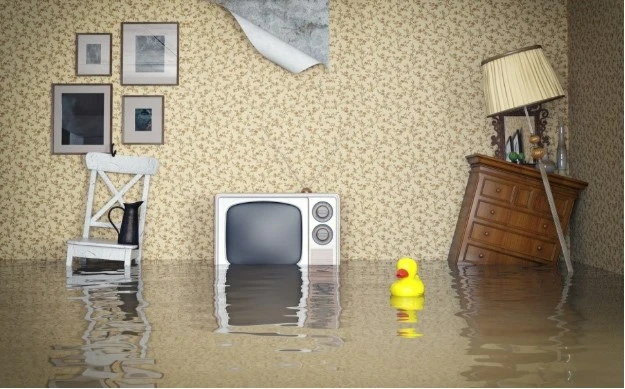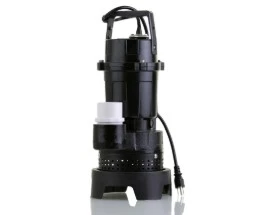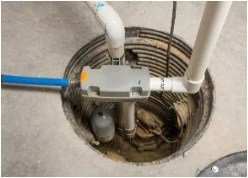
“OMG! Not again! Honey, the basement’s flooded!”
Why wait until your basement floods to check on your sump pump?
Many basements are protected from flooding or other water damage by a system of drainage pipes that directs water into a “sump”—a pit where water collects. A “sump pump” then pumps the water collected in the sump by funneling it out of, and away from, your home. Sump pumps are supposed to work automatically, pumping water out of the basement every time it fills. However, if your sump pump is not working properly, it will not take long for water to spill over the sump and flood your basement, causing very expensive damage.
This past February, much of Michigan areas experienced flooding due to heavy rains that caused major damage to many homes. Ironically, flooding caused by extreme downpours is not that common. National statistics estimate that 75% of flooding in homes is caused by reasons other than heavy rains. Your basement could flood or become hazardously wet for the following reasons:
- Clogged gutters or improper roof drainage
- Sprinkler systems causing backup
- Storm sewer backup or blockage
- Groundwater problems
- Changing neighborhood landscapes
- Property grading and sloping
- Septic obstructions
- And the list goes on
Pedestal vs. Submersible Sump Pumps


Pedestal Sump Pump Submersible Sump Pump
The pump’s motor on a pedestal type is above the sump and out of the water. These types of pumps generally are less expensive than submersible pumps, which use the water in the sump to keep them cool. Since pedestal pumps do not have the benefit of the water’s cooling, it is possible
Nevertheless, early spring is an excellent time to make sure your sump pump is well maintained and working properly.
What goes into ensuring a well-maintained sump pump?
Aire Serv recommends the following checks to your system to ensure proper functioning:
Water-level or Flood Alarm
Some sump pumps have an alarm system that will alert you if it is not working properly and water is about to spill over. If capable, some of the more advanced alarm systems will notify you via cell phone or contact your alarm service when flooding is about to occur. Since most of the alarm systems are battery powered, start by making sure the battery is sufficiently powered. Also, test the alarm to determine that it will function when triggered by high water.
Ground-fault Circuit Interrupter (GFCI)
Some sump pumps are plugged in to a ground-fault circuit interrupter (GFCI) outlet, which protects you against electric shock. You should verify that your sump pump has a GFCI outlet. It is critical that the GFCI be installed properly and is inspected at least once a month to make sure it is operating correctly. Your GFCI monitors the electricity flowing in a circuit, and it is designed to detect any loss of current, such as when the current takes an unintended path like through water or a person touching a live wire. This “short circuit” will trigger the GFCI device to shut off the current, shielding you from a dangerous or deadly electrical shock.
In checking the GFCI, push the “test” button. If the GFCI “trips” when you do, your device is working properly. Hit the reset button to put your GFCI back in operation. If the device does not trip, it is essential you contact a maintenance person, such as the trained service personnel at Aire Serv. Also, if there has been excessive water in your basement, the GFCI may have tripped, shutting off your sump pump. If you don’t hear your pump running, check if the GFCI needs to be reset.
Sump Pump Position
When you check on your sump pump, look first to see if it is standing straight up and down. Slight shaking of your unit during its operation may cause the sump pump to fall over or lean to one side. A change in position can wedge the pump’s “float arm”, which must be functioning in order to activate the sump pump.
Servicing Your Sump Pump
To make sure your sump pump starts automatically and that the water drains quickly once the pump is running, pour a bucket of water into the sump pit. If your pump does not start automatically or the water appears to drain too slowly, it is time to have your sump pump serviced or replaced. The professionals at Aire Serv offer this type of service and can provide you with a properly installed sump pump if necessary.
Also, it is important that you physically remove a submersible pump from your sump periodically and clean the grate on the pump’s bottom. The pump’s sucking action may pull small stones and other debris into the grate, thereby blocking the inlet or damaging the pump.
Outlet and Discharge Pipes
Make sure the system’s outlet pipes are joined securely together and draining out the water a minimum of 20 feet away from your home’s foundation. Also, take a look at the discharge pipe’s vent hole to make sure it is free and clear. Finally, a functioning “check valve” is a must. A sump pump check valve is located in your sump system’s discharge pipe, and it prohibits water from flowing back into the sump from the discharge pipe when the pump motor turns off. Check valves can and do fail or “stick” so when you are making sure your sump pump is working properly, include an assessment of the check valve’s functionality.
When it is time to have a professional take a look at, maintain or replace your sump pump, give Aire Serv a call. Best of all, you can breathe easy, knowing you have a reliable, trusted and customer-oriented Aire Serv team at your service.
Contact the experts at Aire Serv® today.
And Our Customers Agree!
“Great, professional people. Everyone I spoke with was very polite and easy to deal
with. Very knowledgeable of every aspect of what we needed. I would recommend Aire Serv to anyone. They are top notch.” —Tim

